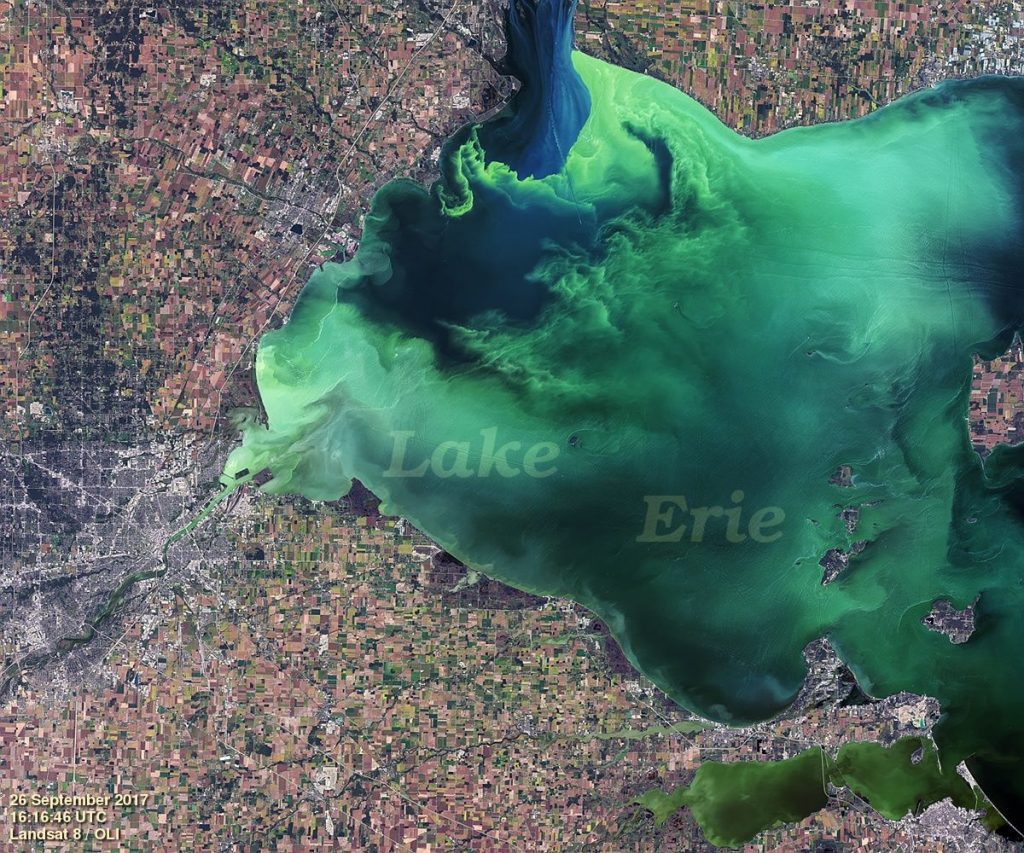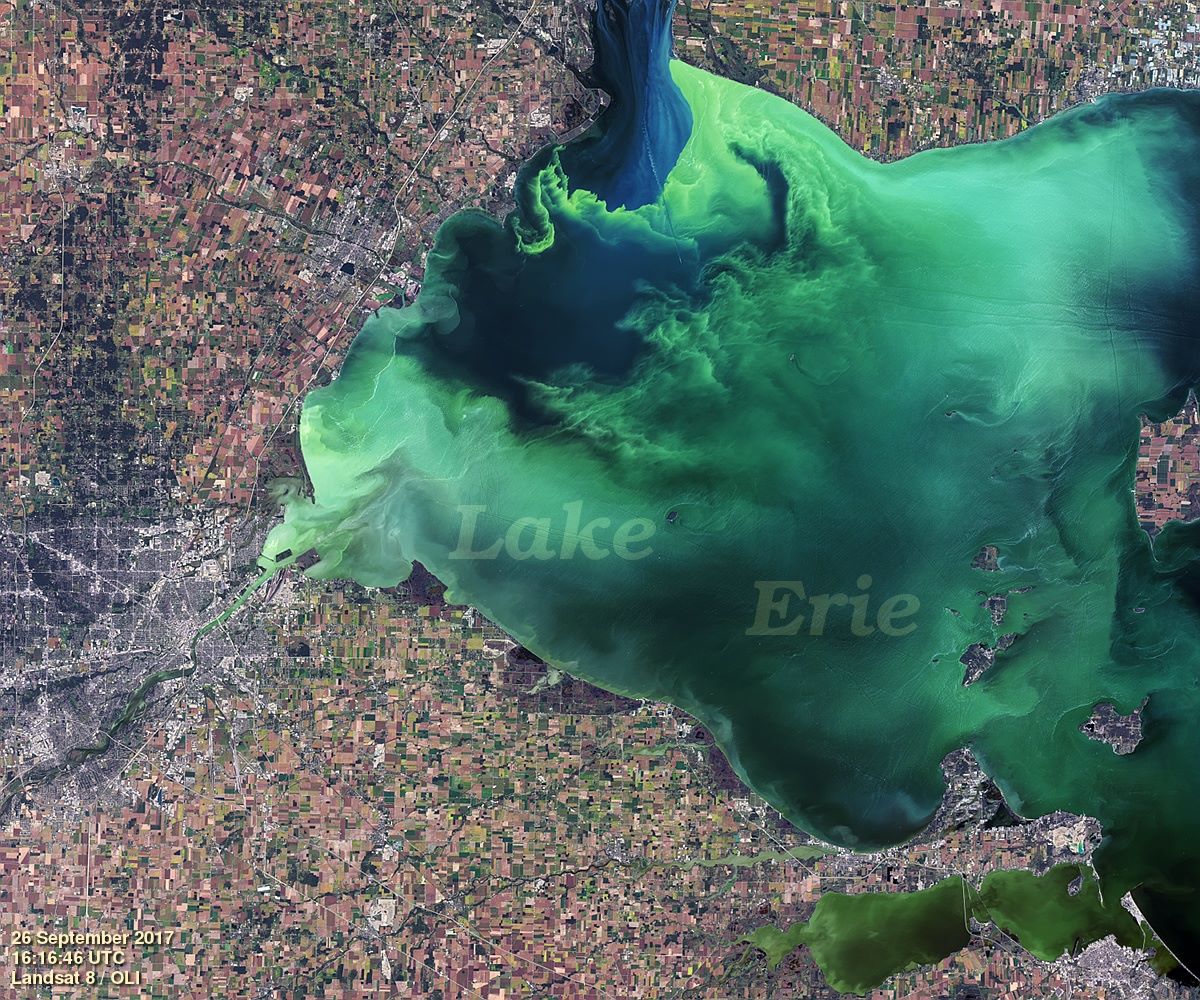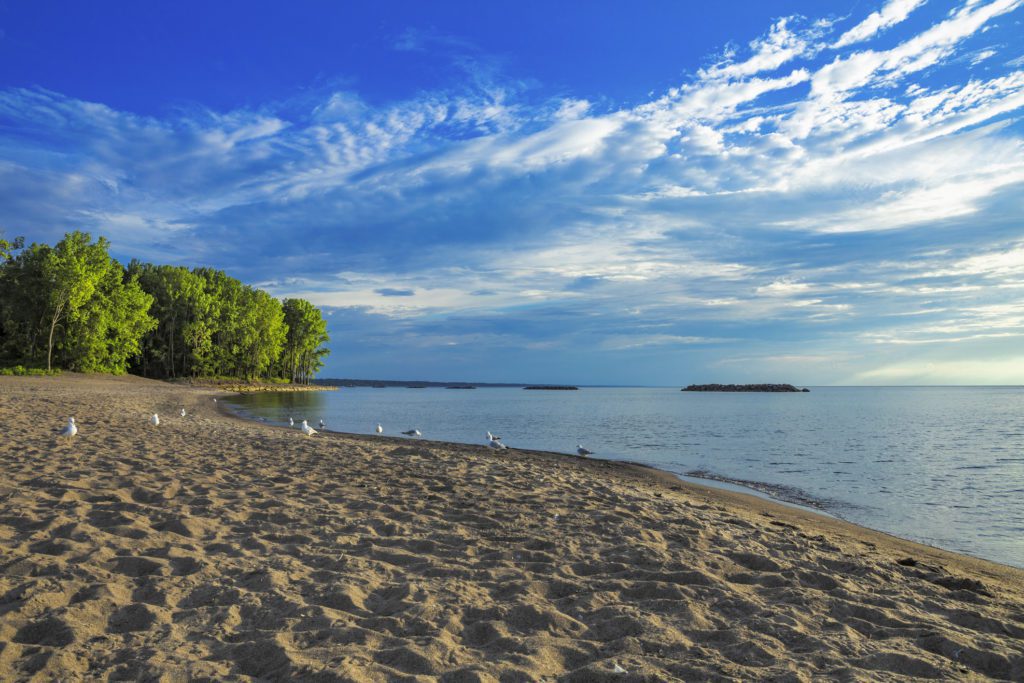Guest blog by Nancy Goucher from Freshwater Future Canada.
If you’ve visited a beach along the western Canadian shores of Lake Erie lately, you may have noticed that the water is green, slimy and smelly. What’s the cause? Blue-green algae.

In recent weeks, a toxic algae bloom has extended across the lake—it’s so big that it’s even visible from space. As U.S. National Oceanic and Atmospheric Administration (NOAA)’s satellite images show, the bloom is washing up on Ontario’s northwest coast starting near Harrow, Ont. and going all the way down to Point Pelee.
The worst of the bloom hit Colchester Harbour in the Town of Essex, which forced health officials to close the beach to swimming and made boating close to shore a pretty unpleasant experience. Beaches have also closed on Pelee Island.
The problem with algae
Blue-green algae is more than just a nasty sight. It can also produce toxins harmful to humans and animals. While algae is a normal and essential part of lake ecosystems, too much algae can pollute beaches, clog water intake pipes, kill fish, and put human health at risk. Additionally, exposure to blue-green algae may cause nausea, vomiting, diarrhea, or fever in humans and pets.
Algae grows when there is excessive nitrogen and phosphorous in the lake, which accumulates when rain and snowmelt flush these nutrients into waterways. In the Lake Erie watershed, most of the nutrients come from farms.
More needs to be done to protect Lake Erie
This latest bloom demonstrates that current actions to protect the lake aren’t enough. The federal and Ontario governments need to step-up and develop, implement, and finance a comprehensive action plan for the lake.
Last spring, the Ontario and federal governments released a draft joint plan. Unfortunately, it proposes few new activities or approaches to reduce runoff from agricultural and rural areas. It also lacks timelines and performance metrics needed to keep the plan on track.
My organization, Freshwater Future, is working with Environmental Defence and the Canadian Freshwater Alliance to suggest improvements to the action plan. We think we need tangible solutions like on-the-ground support for farmers to help them evaluate and implement nutrient management practices on their fields, stronger enforcement of pollution prevention laws, and sustainable funding for monitoring and cost-share programs.
Lake Erie is worth the investment. It supports a multi-billion dollar economy and doing nothing could be costly – upwards of $272 million annually. And the ability to swim, fish and boat in clean water is priceless.









